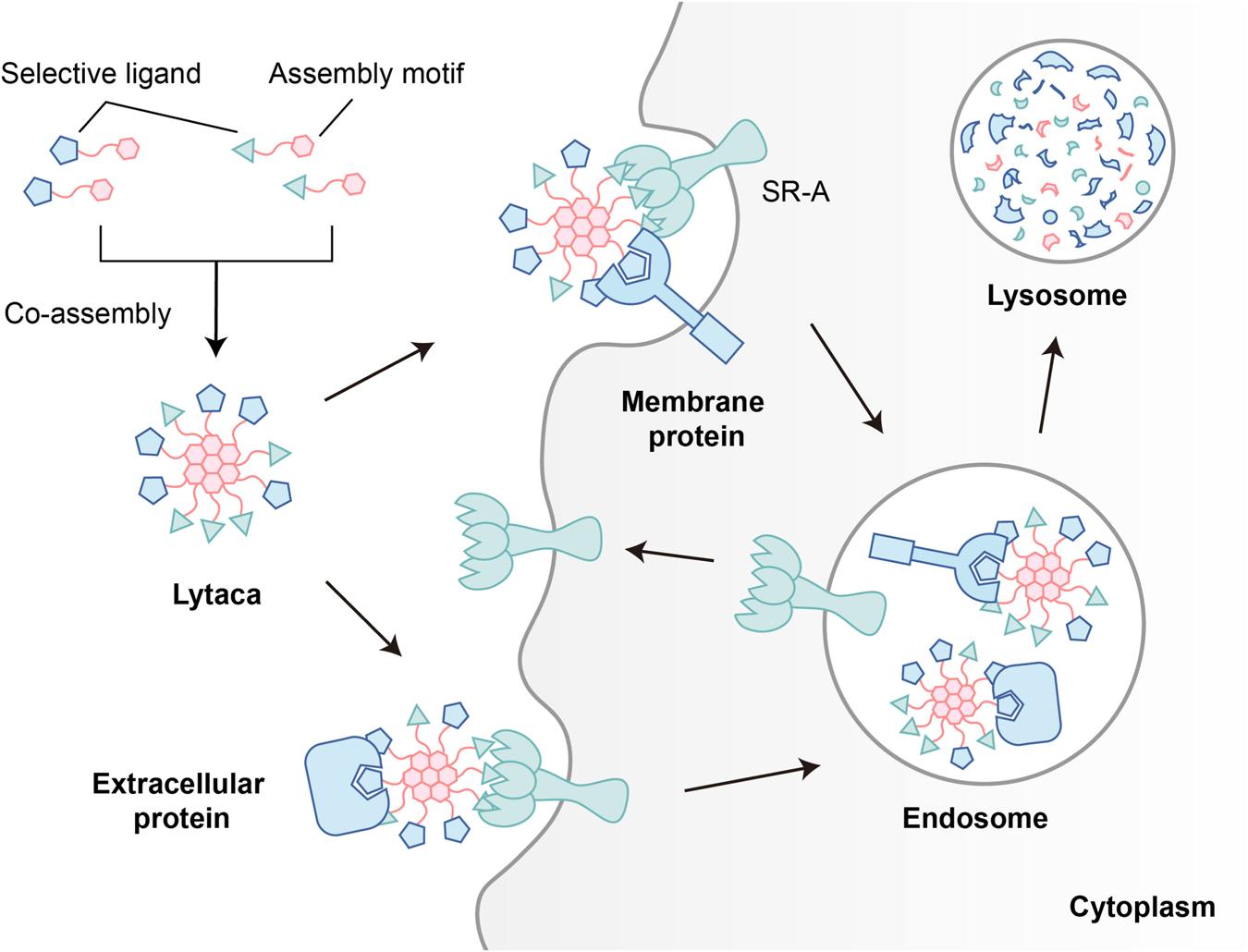Qijia Wei, Dangliang Liu, Wencheng Xia, Fengzhang Wang, Lu Huang, Jun Zhang, Xiaoya Wang, Zhongxin Xu, Changdong He, Wenzhe Li, Xiaomeng Shi, Chu Wang, Yuan Liu*, Cong Liu* & Suwei Dong*



The self-assembly of biomolecules through noncovalent interactions is critical in both physiological and pathological processes, as exemplified by the assembly of amyloid β peptide (Aβ) into oligomers or fibrils in Alzheimer’s disease (AD). Developing molecules that can modulate this assembly process holds significant mechanistic and therapeutic potential. In this study, we identified glycopeptides as a class of protein aggregation modulators, showing that β-N-acetylgalactosamine (β-GalNAc)-modified Aβ9-21 promotes Aβ42 fibrillation while reducing its toxic oligomers. Using biochemical assays, cryo-EM, and molecular dynamics simulations, we demonstrated that β-GalNAc-modified Aβ9-21 coassembles with Aβ42, forming unique fibril structures stabilized by both hydrophobic interactions and an organized hydrogen bond network facilitated by the glycopeptide. Importantly, β-GalNAc-modified Aβ9-21 can alleviate the neurotoxicity of Aβ42 in neuronal cells and an AD male mouse model. These findings underscore the potential of glycopeptides in regulating amyloid aggregation and provide structural insights for designing molecules targeting amyloid-related pathologies.